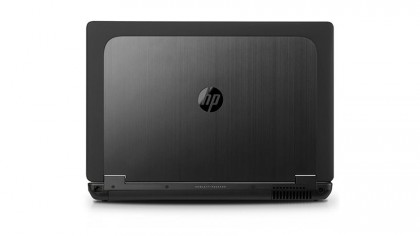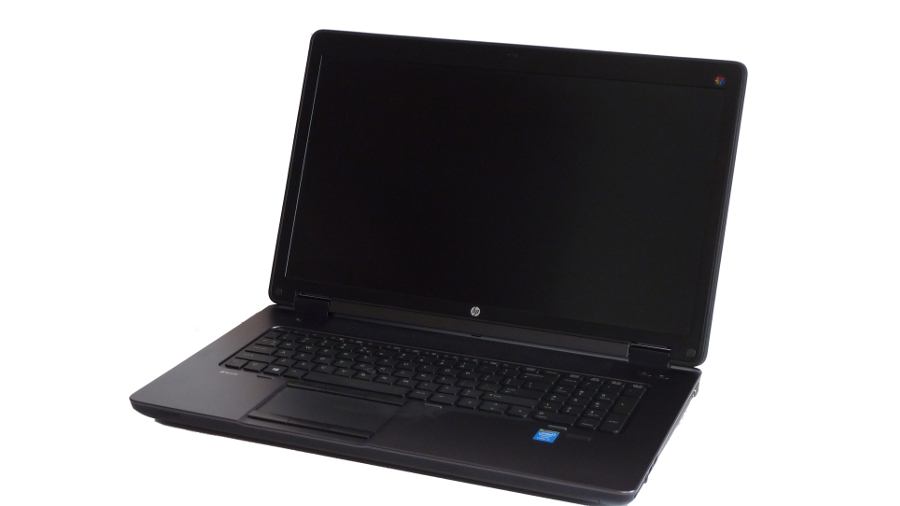Why you can trust TechRadar
With such a high price and high-end specification, nothing less than superb performance is to be expected from the ZBook 17, and that's precisely what it delivers, rivalling mid-range desktop workstations.
In Cinebench 15 the ZBook 17 managed a frame rate of 83.24 FPS in the OpenGL test, and 616 points in the CPU test. The OpenGL results are particularly impressive, not just a leap ahead of laptops with less powerful GPUs, but even some desktop workstations with Quadro cards. The CPU result is excellent too, but this matches, rather than beats, its rivals. It's a whisper higher than the result from Dell's 15-inch Precision M4800 mobile workstation.
PCMark 8 is a standard benchmark I run on practically any computer I see, but it's not always the best way to judge workstation performance, as it only tests general tasks rather than graphics-heavy visual design. The ZBook 17 still delivered an excellent result of 3631, compared with 3158 for the Dell Precision M4800 and 2632 for the particularly thin Dell Precision M3800.
Likewise 3DMark is a test to evaluate gaming performance, and won't take full advantage of the K4100M. The ZBook 17 puts in a good show though, with a respectable 3123 points in the Fire Strike section, a test that quickly brings most graphics cards to their knees.

As an example of the difference between the ZBook 17 and an Ultrabook, the integrated graphics in the svelte Asus Zenbook UX301LA scored 693 in the same test. The ZBook is over four times faster.
Benchmarks of professional software offer a better example of the ZBook 17's power. In 3DS Max 2015 I rendered the Underwater demo scene, in its standard resolution of 800 x 451, in 5 minutes 15 seconds, and at 1080p resolution in 23 minutes 54 seconds. That is a pretty quick time, but
slightly disappointing compared with the Core i7-4900MQ in the Dell M4800, which took a minute less to render both scenes. Given the choice, we'd opt for a processor upgrade to the same Core i7-4900MQ for the ZBook 17.
Battery life
Since both mobile workstations and gaming laptops come with high-end components that guzzle power, it makes less sense to ask about the "best" battery life than to ask which laptop is least awful. While ultra-portable laptops and tablets can offer double-digit battery life, with mobile workstations, three hours is roughly average, and any more than four is an excellent result.
Sign up to the TechRadar Pro newsletter to get all the top news, opinion, features and guidance your business needs to succeed!
Using PCMark's built-in battery test, with the screen brightness set to 80%, I measured 1 hour 54 minutes, one of the worst scores I've seen. With the same brightness and looped playback of Avatar, it conked out after 2 hours 15 minutes.
It's no coincidence that the ZBook 17 is also one of the most powerful mobile workstations around. Despite energy-saving technology, any high-end software, video encoding or drawing complex 3D scenes will force the ZBook 17 to be connected to a mains power supply.

Display
The last aspect of the ZBook 17 I chose to test was the accuracy of the screen, the component that's arguably the real star of the show.
Using a Spyder 4 colorimeter, I looked at brightness levels, colour gamut and accuracy. The DreamColor display measured up fantastically. It captured 100% of the sRGB colour space, 95% of NTSC and 98% of AdobeRGB. Its brightness of 320cd/m2 is likewise excellent, with an average Delta E of 1.4. These results are matched only by standalone colour-accurate displays. HP's own Z1 G2 all-in-one workstation has a lovely screen, but it only offers 76% NTSC and 84% AdobeRGB coverage.
If you aren't yet sure that the ZBook 17's DreamColor display is simply awesome, the results from the Spyder's screen uniformity test may convince you. Screen uniformity is of most interest to professional graphic designers, where a difference in white levels on parts of the screen affects colour accuracy. Consumer-grade monitors with cheap backlights can vary by as much as 30%. Even expensive models sometimes dip by 20%.
Only the top of the screen on the HP ZBook 17 exhibited much of a brightness drop, with 11%. The rest of the scores were within 5%, a great result that really shows the class the ZBook 17 competes in. This type of colour-accurate display doesn't come cheap, but if you really need something like this, you'll find the budget for it.
